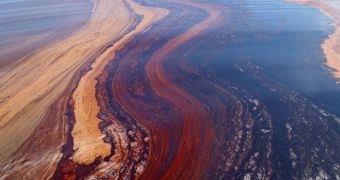A group of investigators at the University of California at Santa Barbara (UCSB) have just released a new study, which was able to identify the bacteria responsible for breaking up a large chunk of the natural gas that was released in the Gulf of Mexico during the Deepwater Horizon spill last summer.
The investigation was carried out using funds from the US National Science Foundation (NSF) and the Department of Energy, both of which want to know how to deal with such situations in the future, albeit for different reasons.
Scientists with the research group used DNA analysis techniques to identify the microbes that consumed important amounts of natural gas. An interesting aspect the team discovered was that the temperatures of the Atlantic Ocean at this location played an important role in the natural clean-up.
Details of the research effort were published in this week's issue of the esteemed journal Proceedings of the National Academy of Sciences (PNAS). UCSB geochemists David Valentine and Molly Redmond were the leaders of the investigation.
According to the team, the natural gas that was released in such high amounts, and at such depth, during the oil spill was primarily made up of methane, ethane and propane. Knowing the chemical composition of the gas was important for understanding the microbes that reacted to it.
Oceanospirillales, Colwellia and Cycloclasticus were found to be the primary types of bacteria responsible for the clean-up. The research team explains that these organisms were different from those collected from communities on the surface of the water, inside the oil slick proper.
“It's much warmer at the surface than in the deep water--around 80 degrees Fahrenheit versus 40 F, which is pretty close to the temperature in your refrigerator,” Redmond explains. She is also the lead author of the PNAS paper.
“There was very little natural gas in the surface samples, suggesting that both temperature and natural gas could be important in determining which bacteria bloomed after the spill,” the investigator adds.
“Most bacteria grow more slowly at cooler temperatures--that's why we keep our food in the refrigerator. But psychrophilic bacteria actually grow faster at cold temperatures than they would at room temperature,” Redmond goes on to say.
Colwellia was determined to be the most efficient eater of ethane and propane in the Gulf. However, they only operated at water temperatures exceeding 40 degrees Fahrenheit (4.4 degrees Celsius).
“This work continues to remind us that the ocean, its microbes, and petroleum hydrocarbons share an ecological history that extends far into the geological past,” NSF chemical oceanography program director Don Rice concludes.

 14 DAY TRIAL //
14 DAY TRIAL //